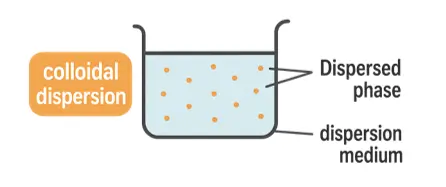- Introduction to Colloidal Dispersions explains systems with particles sized 1–1000 nm dispersed in a medium.
- Introduction to Colloidal Dispersions highlights applications in pharmacy, food, cosmetics, and medicine.
- Colloidal Dispersions is a biphasic system where very small particles (1–1000 nm) of one substance (dispersed phase) are evenly distributed throughout another (dispersion medium).
- It bridges the gap between true solutions and coarse suspensions.
- In pharmaceuticals, colloidal systems are valued for their impact on drug stability, solubility, bioavailability, and therapeutic efficacy.
Key Characteristics of Colloidal Dispersions
- Particle size: 1–1000 nm
- Two-phase system: Dispersed phase + continuous phase
- Heterogeneous, but appears macroscopically homogeneous
- Thermodynamically unstable, but kinetically stable
- Exhibits:
- Tyndall effect (light scattering)
- Brownian motion
- Zeta potential
Advertisements
Types of Colloidal Systems
- Classified by:
- Interaction with dispersion medium: Lyophilic vs. lyophobic
- Physical state: Sols, gels, emulsions, aerosols, foams
- Particle charge
Pharmaceutical Applications
| Application Area | Examples |
| Parenteral delivery | Liposomes, nanoparticle suspensions |
| Topical formulations | Creams, gels, ointments |
| Ophthalmics | Colloidal eye drops, nanosuspensions |
| Sustained release | Coacervates, microspheres |
| Targeted therapy | PEGylated nanoparticles, stealth liposomes |
Benefits of Colloidal Dispersions:
- Enhanced solubility, stability, and bioavailability
- Controlled or sustained release of APIs
- Targeted delivery, reducing side effects
Advertisements


